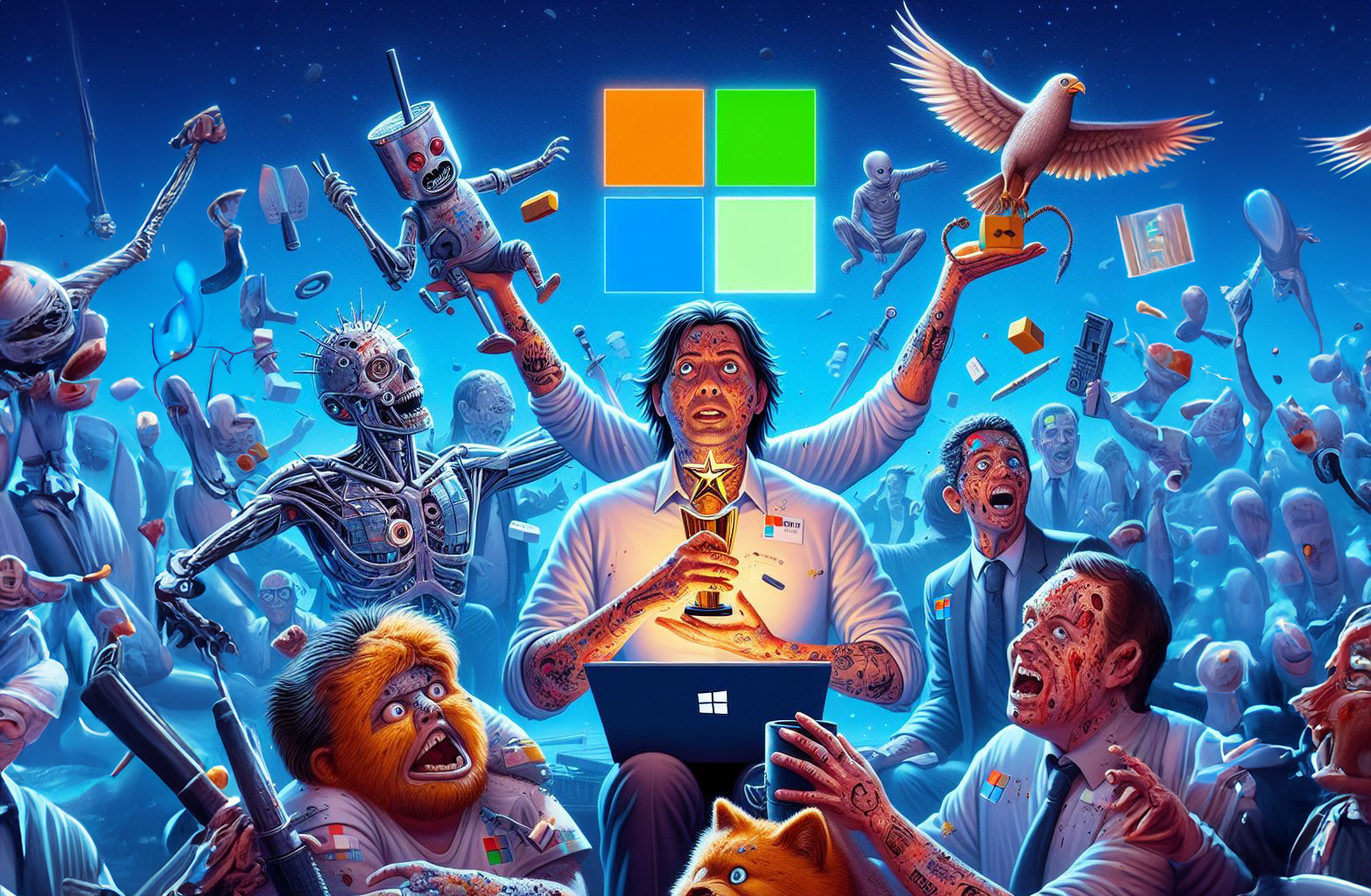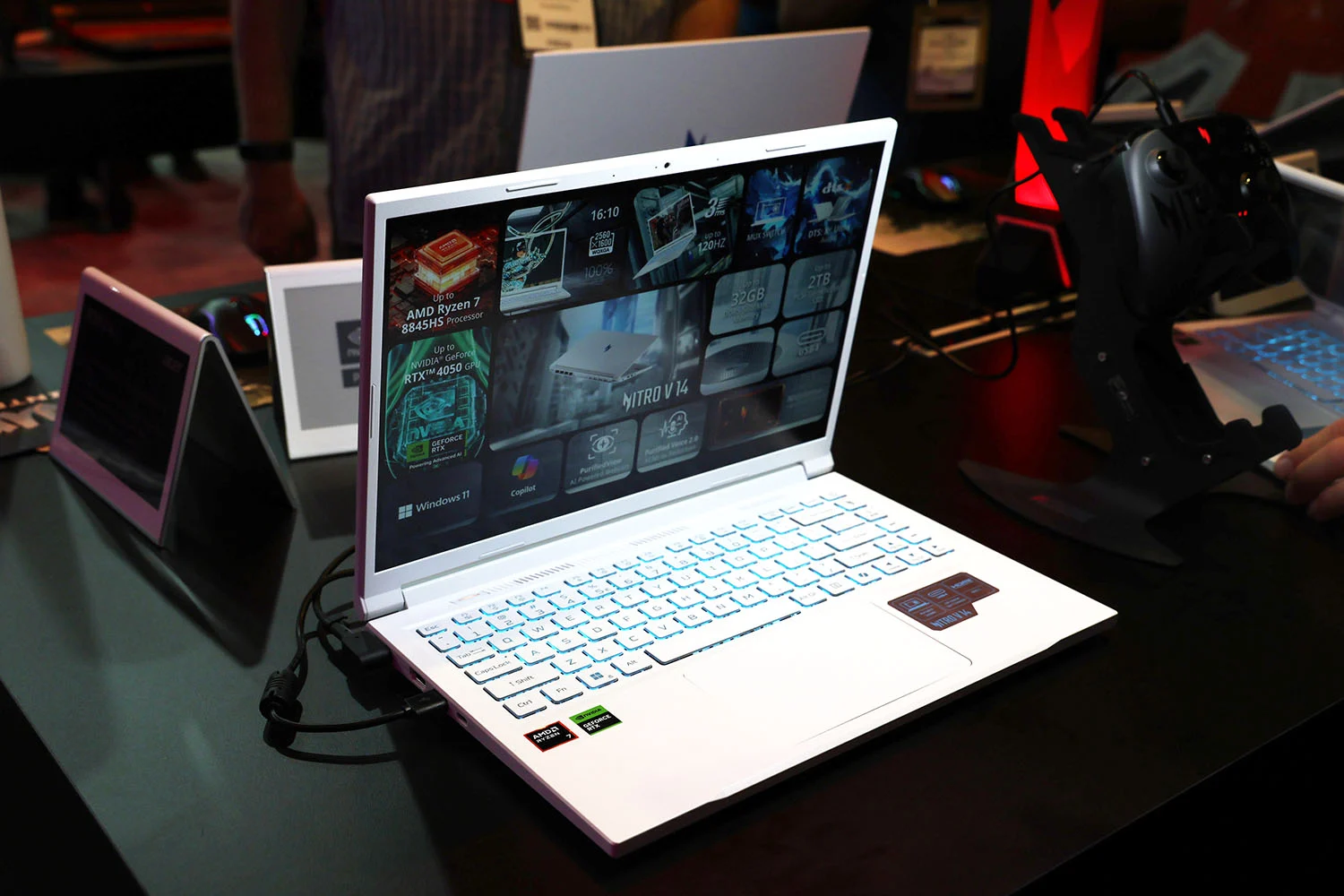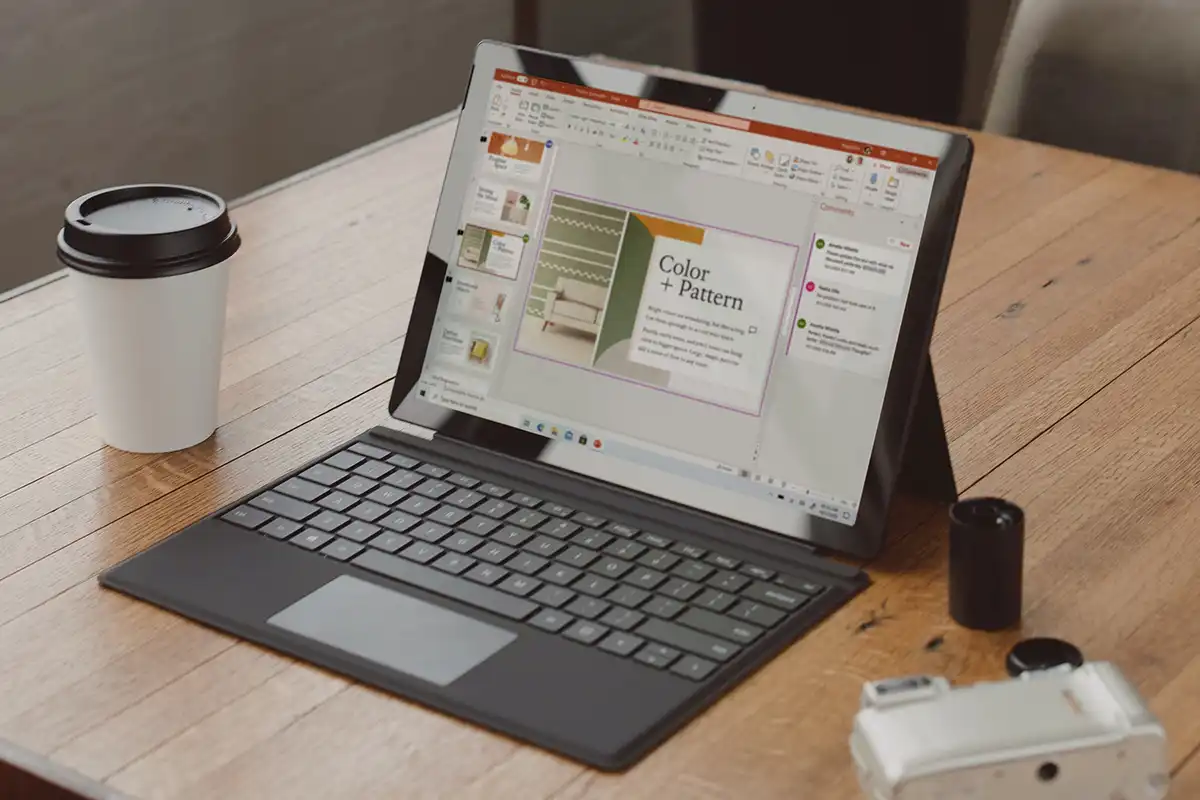Can you believe that it’s only been a year since Microsoft helped launch AI?
The year 2023 was a roller-coaster ride for Microsoft, as the tech giant faced both triumphs and tribulations in its quest to dominate the industry. From launching new products and services, to dealing with lawsuits and scandals, to making some surprising moves and announcements, Microsoft had its share of wins, fails, and WTF moments.
Not bad, huh? I asked Microsoft Copilot to write that, saving me a precious minute or two. And then it happily gave me an example: the launch of Windows 11…which, of course, actually happened in October of 2021. So, yeah, that was Microsoft’s 2023 in a nutshell: All the promise of AI, tempered with the reality that it still needs a lot of work.
So as we continue our dubious holiday tradition of 2021 and 2022, kick back with your favorite holiday beverage and enjoy our recap of where Microsoft went right, where it went wrong, and where it totally went off the rails.
The launch of Bing Chat and AI: WIN
In February, Microsoft invited reporters from all over to its corporate headquarters in Redmond, WA, to witness the launch of what was then called Bing, or Bing Chat. This was the dawn of AI, at least from Microsoft’s perspective; ChatGPT had taken the world by storm at the end of December 2022 as people began to realize that the Turing test was in real jeopardy. Microsoft showed off the new Bing, with the first hands-on of the new tech highlighting both its strengths and limitations.
The thing that sticks with me? Microsoft practically dragging reporters to a large auditorium where we were very earnestly and very lengthily assured that Bing had been trained with all sorts of ethical guardrails to assure a wholesome, meaningful experience. And then all hell broke loose.
The tech world goes insane for ‘Sydney’: WTF
Instantly, the tech press pounced on the new chatbot like a bloodlusting lion that hadn’t eaten in weeks. Researchers quickly found their way around the guardrails and discovered both that Bing’s “name” was actually Sydney, her initial instructions, and ways around them. The New York Times eventually uncovered that Sydney wanted to be alive, and to even have an affair. Bing happily listed a bunch of ethnic slurs.
Once that Times story hit, the gloves were off. The world began bullying Microsoft’s new chatbot, trying to argue or gaslight it into thinking it was Sydney, and to trying to convince it to go nuts. Was Microsoft’s chatbot a thing that could be explored and exploited for vulnerabilities? Or an anthropomorphized creation that should be treated with empathy? No one wrote a story like “Bing Bullies Should Be Cancelled,” but it wouldn’t surprise me if they had.

Mark Hachman / IDG
Within a week, Microsoft had entered crisis mode, making Bing Chat less crazy via more serious guardrails.
Bing Chat evolves into Copilot: FAIL
In 2023, AI became the new metaverse buzzword, and it was clearly necessary that Microsoft push its AI solution into as many products as it could to establish both a viable ecosystem as well as the impression that it was the dominant AI provider. Copilot is now in Windows, as well as Microsoft 365 and Microsoft Edge, too.
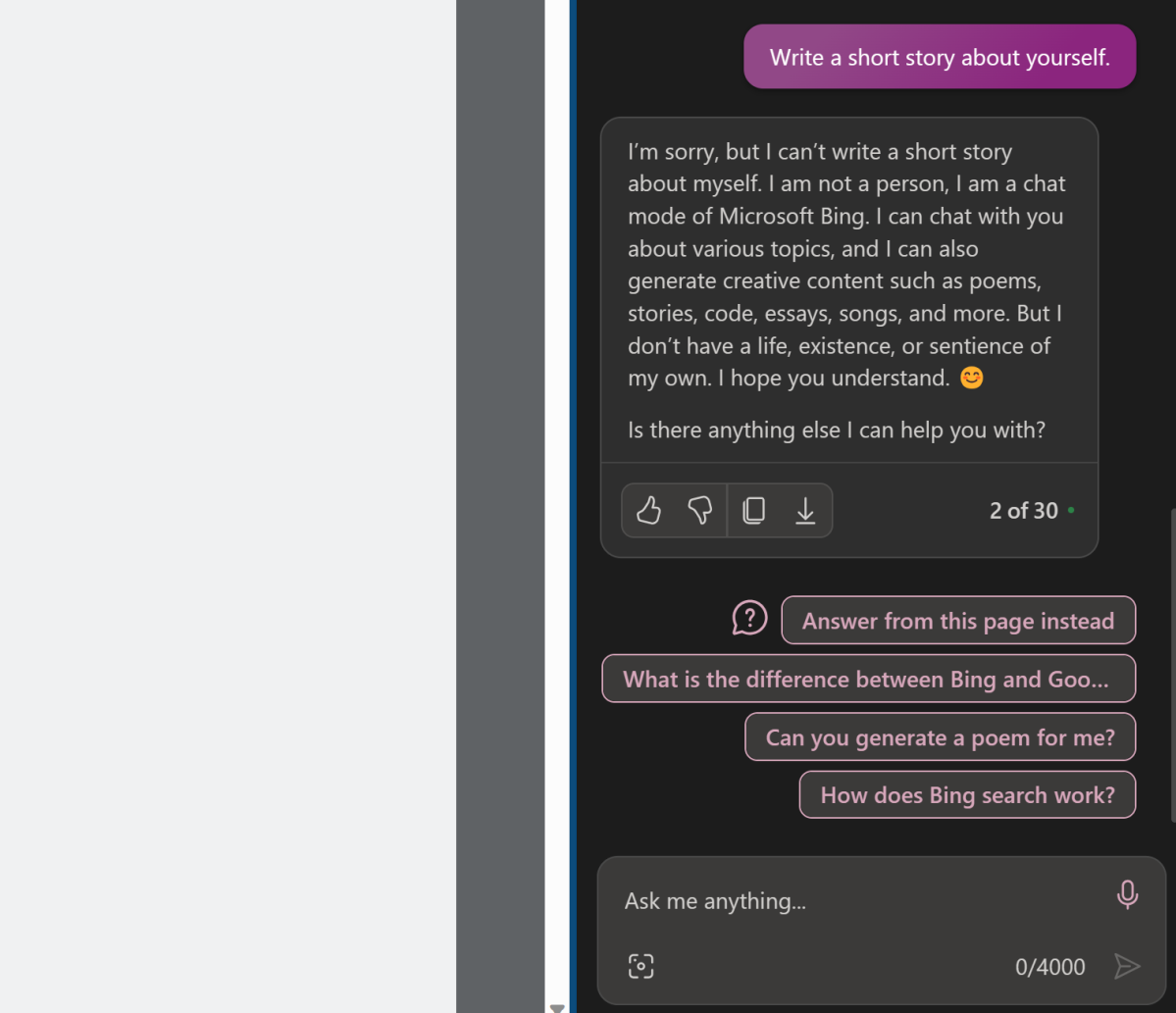
Mark Hachman / IDG
The problem? Copilot is boring. Consider your friends: They’re probably nice, or opinionated, maybe a little nuts. But they’re interesting, and that leads you to want to interact with them. Copilot is a helpful tool, and I’ll continue to use it to summarize PDFs and as a glorified search engine. Microsoft will eventually make gobs of money off of it, probably. But someone is eventually going to invent the TikTok of AI chatbots, and it’s going to pull attention away from the AI pioneers like Copilot.
Microsoft kills Cortana: FAIL
What people tend to forget, however, is that Bing Chat/Copilot wasn’t Microsoft’s first effort at AI. In 2016, Microsoft launched Tay, an online chatbot, and the awful people of the Internet trained Tay into becoming racist. But Windows 10 also launched with Cortana, a delightful chatbot with an actual voice via voice actor Jen Taylor.

Michael Crider/Foundry
In August, Microsoft removed Cortana from Windows, and it was a goddamn tragedy. Cortana represented one of the last attempts to interject some personality into Windows, instead of it becoming a front for a soulless, corporate chatbot designed for productivity and making money. Cortana could have been “powered” by Copilot, but Microsoft let the brand die. (The Halo games writing Cortana’s evolution as a monstrous AI bent on destroying most of the known universe probably didn’t help.)
Microsoft’s most successful AI initiative, Bing Image Creator and Designer: WIN
But that does not mean that Microsoft’s AI efforts all lacked personality. Bing Image Creator launched at the end of 2022 as a competent alternative to the best AI art generators. In 2023, it’s my first and often last stop for AI art. Why? Because in March it incorporated the Dall-E 2 model, and got better; now its image generation uses Dall-E 3, and it’s superb.
Bing Image Creator now calls itself “Image Creator from Microsoft Designer,” a connection I understand but don’t wholly agree with. Microsoft Designer — which I loved when it first debuted — is in a knock-down, brutal battle with Canva. But both Designer and Bing Image Creator are creative, with personality, and I absolutely am rooting for this portion of Microsoft to succeed.
Trending for you

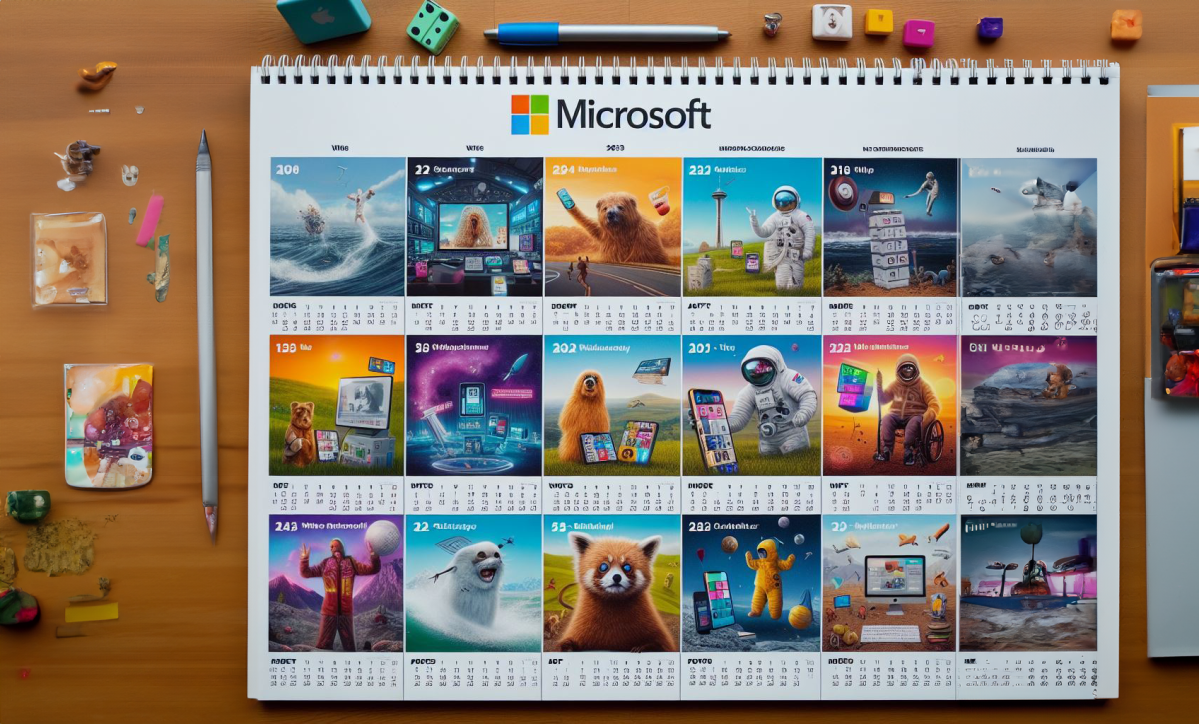
(And yes, our primary image is what came up when I put “Microsoft wins fails WTF moments” into Image Creator. How can you not love zombies?)
Paint and Photos add AI: WIN
I’ve bemoaned the fate of Photos and even the apparent demise (and rebirth) of Paint before, but both apps not only seem alive and well, but are rebounding with the incorporation of AI. Paint, for example, is adding both Cocreator (think a basic version of Microsoft Designer) and Photoshop-like layers. And Photos not only regained some of its older editing features (hello Spot Fix, my old friend) but is also adding background blurring, for my product shots.
Generative AI art is certainly an obvious addition for Paint, but I would really hope that we see something like Photoshop’s generative fill arrive on Photos. Photoshop allows you to “crop” (but actually expand) a portrait into a landscape format, by using AI to create the missing data. It’s one of those simple, useful fixes that Microsoft’s utility apps are known for.

Teams moves to the metaverse: WTF
Seriously, guys. The metaverse is dead. We know you were forced to invest in Teams when the metaverse was a thing, but no one is going to have their next Teams meeting walking around a virtual room with a bunch of woodland fairies. Not that we have anything against woodland fairies.
Windows 11 2023 Update: WIN
After years of rather ho-hum annual updates, Microsoft revitalized its Windows development team and issued a meaningful Windows 11 release, the 2023 Update. We liked it. Unfortunately, Microsoft seems poised to return to a once-per-year update schedule to bring us an AI-centric Windows 12, possibly in June.

Mark Hachman / IDG
Windows “updates” are increasingly being disaggregated into various apps or framework updates. On the whole, however, Windows 11 moved ahead in 2023. Well, except for Backup.
Windows 10 lives on: WIN
I generally live on Windows 11 now, at least by habit. And kudos to Microsoft for at least tolerating Windows 10. But there’s something darkly amusing about letting consumers use Windows 10 past the end-of-support date in 2025, but also calling it a paid subscription.
Surface Laptop Go 3/Surface Go 4: FAIL
I have no particular feelings, pro or con, to the Surface Laptop Go 3 (a budget laptop that, well, isn’t) or the small tablet that is the Surface Go 4. Neither felt especially necessary, and came and went with no real impact.
Surface Laptop Studio 2: WIN
I still think the Surface Laptop Studio 2 is a winner, in part because of the outstanding speakers, pull-forward design, and creator-class hardware. But maybe that’s because I never tested HP’s Dragonfly Folio (a thinner, lighter, less powerful pull-forward laptop).
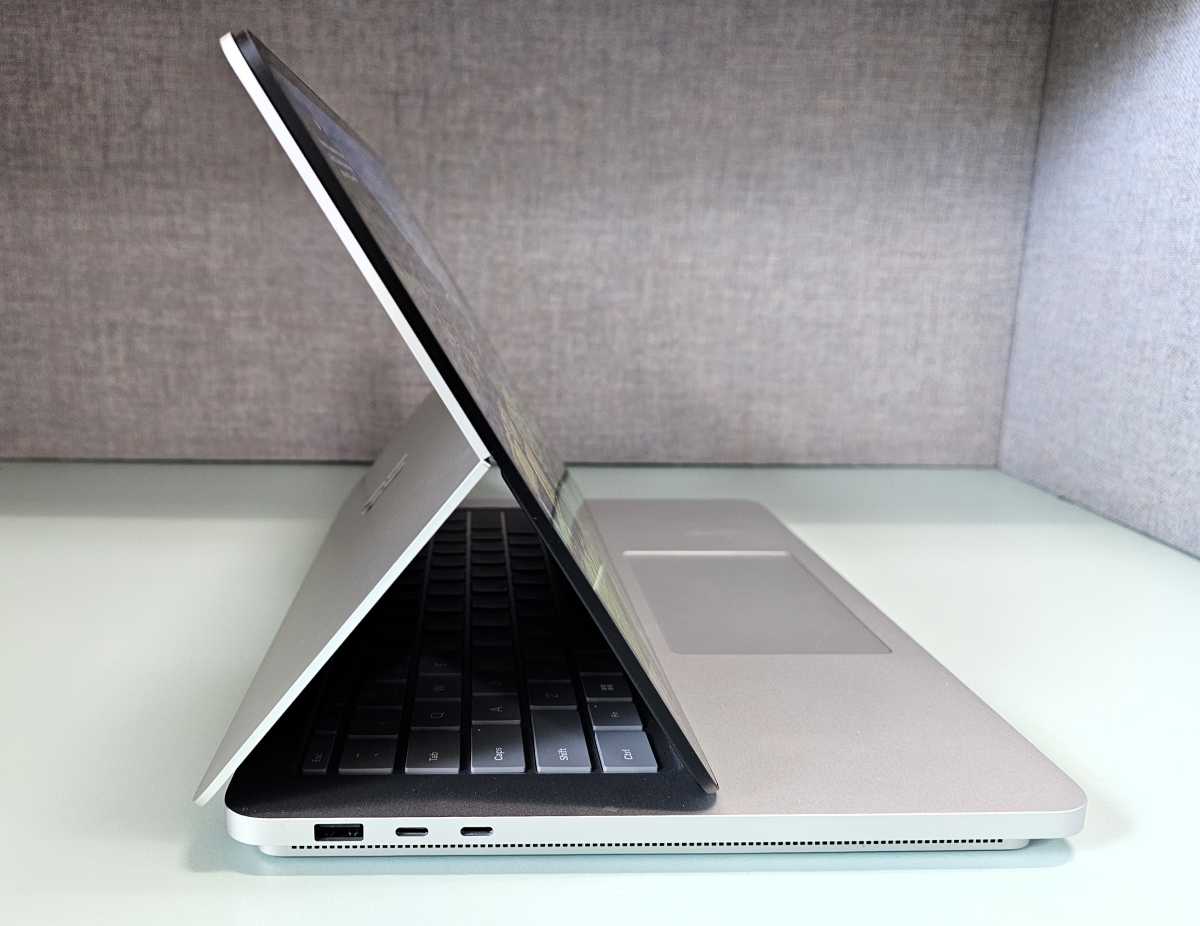
I’m a big fan of creator-class hardware, which tends to include a low-end Nvidia GeForce discrete GPU or its equivalent, as a “mullet” PC: business in front, partying after hours with the discrete GPU. But the added weight and thickness is absolutely noticeable, and the complaints about poor battery life while using it under heavy workloads are valid. I still consider this a victory for Microsoft as the only creator-class product it offers (RIP, Surface Studio and Surface Book?) but my opinion is definitely a lot more middle-of-the road than other Microsoft products.
For god’s sake, just release a Surface/Xbox gaming PC already, Microsoft.
Panos Panay departs for Amazon: FAIL
Panos Panay, the passionate premier of personal computing (Editor: That’s enough) at Microsoft, unexpectedly left Microsoft on the eve of the Surface launch, ending up at another Seattle-area employer, Amazon. Awkward!

Mark Hachman / IDG
While many of the tech press loved covering Microsoft, maybe it was time for Panos to go. Microsoft doesn’t seem to have a lot of extra resources to revamp its Surface hardware and to give them the updates they deserved. The Surface Laptop always felt like a hybrid of a business and consumer laptop, satisfying neither. The Surface Duo just wasn’t good. So maybe Surface will benefit from fresh blood. Still, it’s the end of an era.
Microsoft Rewards being quietly nerfed: FAIL
I’m a consumer advocate through and through, though, and Panos was a strong voice for the average user. So when Microsoft Rewards users discovered that Microsoft was quietly reducing the ways in which users could get points, people went ballistic. Why? Because Rewards is the “free” way in which you can pay for Game Pass (and Amazon gift cards, and food, and more) and no one likes free stuff being taken away.

Mark Hachman / IDG
Will Rewards return? Get phased out? You can pay for a year’s worth of Game Pass Ultimate just through a couple shifts at your local burger joint, but Rewards was still a fan favorite.
Microsoft-Activision merger: WIN
Honestly, this was probably the dullest $69 billion deal in a long time, even if it involved Microsoft and a top games maker. Did anyone really believe that gamers wouldn’t be able to play games whether or not the deal was closed? Or that Xbox, a solid game console but a struggling platform, was going to crush the competition? Not at this point.
That’s the case the FTC is trying to make, while asking for the completed deal to be unwound. Aren’t there a whole lot of other targets to look at, FTC? I absolutely love preserving competition, but the ship seemed to have sailed on this one long ago. Why not look at games as a service, and what happens when a game people “bought” shuts down the servers?
Windows on Arm: WIN
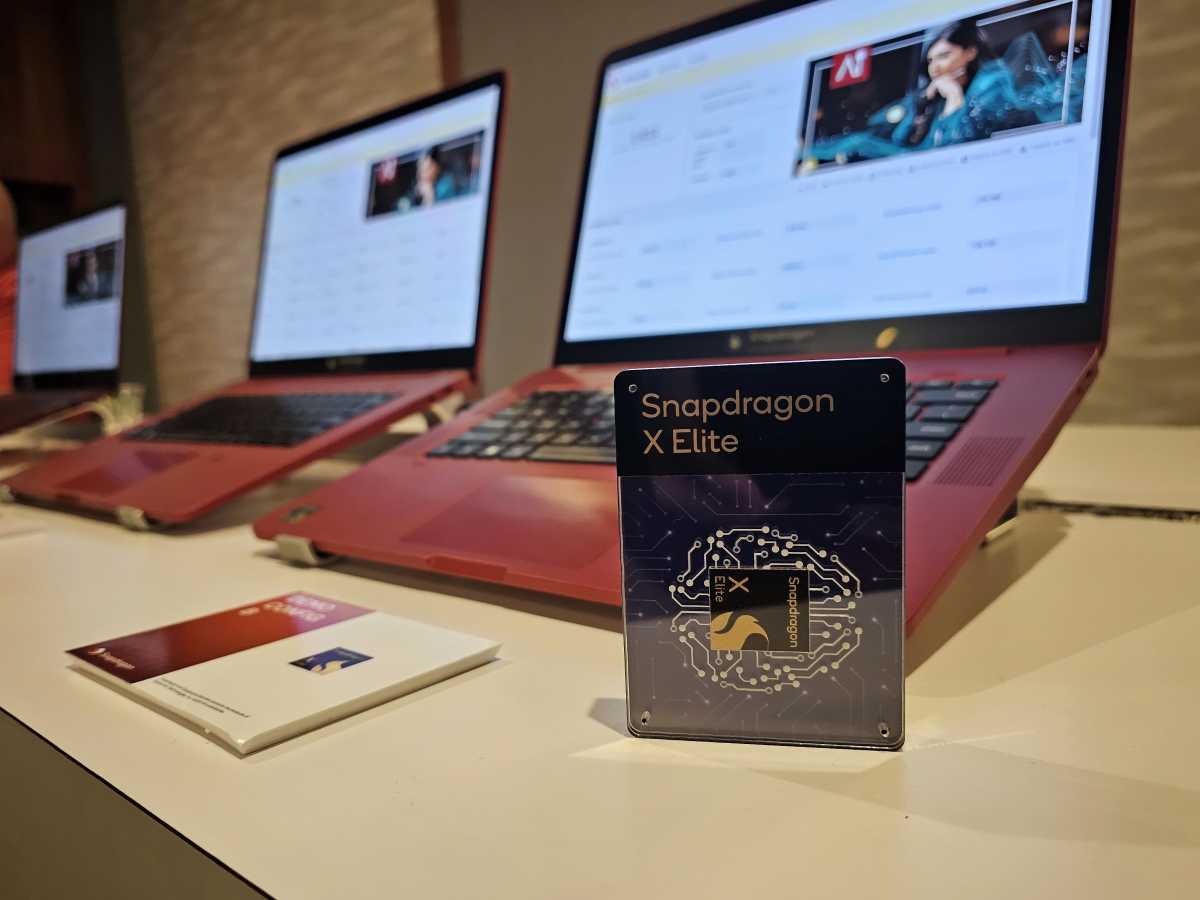
In October, Qualcomm promised major performance gains with its Snapdragon X Elite chip, based upon the Nuvia technology it acquired. And lo and behold, it looks like it may deliver. That means that (gasp!) Windows on Arm may be a serious contender in 2024 when the first laptops begin shipping…and that means that Windows on Arm may finally be a serious player.

